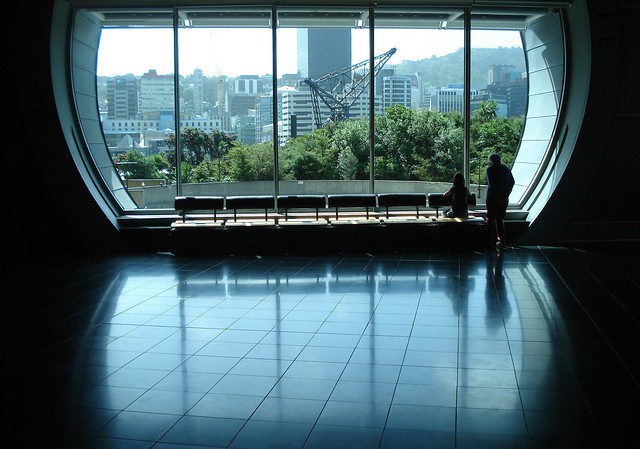This is the third in a series of extracts from my new book The Return of the Mullet Hunter, which I am posting over the the course of this week.
This third extract describes my visit to Te Papa, New Zealand’s excellent national museum in Wellington, which at the time of my visit included an exhibition about the contribution Scots had made to the country. The photo below was taken in Te Papa itself.
The afternoon, after a quick check of emails in an internet café, was spent in one of Wellington’s, if not New Zealand’s, highlights — the national museum, Te Papa. Maori for “our place”, Te Papa was a modern building in the middle of Wellington with a range of exhibitions about the history, both ancient and more recent, of New Zealand. In my opinion, iconic or well-known museums are usually among the most disappointing, but to my surprise and delight, Te Papa had everything a museum should have: an inviting layout, a visitor-friendly approach from staff and signage, free entry, and exciting and innovative exhibits. Despite the ugly exterior it was gorgeous inside, with great use of space and light.
There were sections relating to the natural history of the country, including recreations of what the country would have looked and sounded like centuries before the transforming effect of mass human, especially European, habitation. What impressed me most was the descriptions of the human side of New Zealand, vividly painting the country as a nation of immigrants, forging a new life in a strange but beautiful new world. From the culture of the Maori to the waves of European settlers, it was an inspiring story of a country that had developed into a prosperous, peaceful, integrated and cultured society.
Specific exhibitions were dedicated to particular groups of immigrants, including Pacific Islanders and even the Scots. The section on the Scots, to which I was naturally drawn, described the waves of Scottish settlers since New Zealand’s discovery by Europeans. I had heard somewhere else on my trip that a quarter of today’s New Zealanders were of Scots descent, and the exhibition outlined the significant contributions made by Scots to the country’s industry, engineering, religion and education, as with many of the other British colonies so strongly marked by Scottish influence. Meanwhile, in an amusing irony that for me epitomised the self-contradictory nature of Scottish identity, interpretations described how Scots had been central to the development of both New Zealand’s alcohol industry and temperance movement.
There was a clear Scottish footprint in the rest of Wellington too, in the accents I heard around me, street names and of course the friends I had in the city. There were even some pipers around the place. While I had sat in the café earlier with Corinne I’d heard a busking piper play “The Dark Island”, a popular tune written in the 1960s for a television show that was set on the island of Benbecula, where I grew up. All those thousands of miles away, here was a little echo of home.
It was inspiring to see the way that Scots settlers had made such a vital impression on New Zealand and that their influence is a part of what makes it such a great country today. It’s ironic in a way that the Scots have been most successful when they’ve left their home shores, making important contributions to the likes of the USA, Canada, England and New Zealand. Anyone who doubts the Scottish people’s ability to make a success of their own country should travel abroad and see the great job they’ve made of other ones.
You can buy The Return of the Mullet Hunter on the Kindle for a frankly astonishing bargain price at Amazon UK, USA, Canada and Australia, plus all other Amazon regions. Other ebook formats and a paperback version will follow in 2014.



